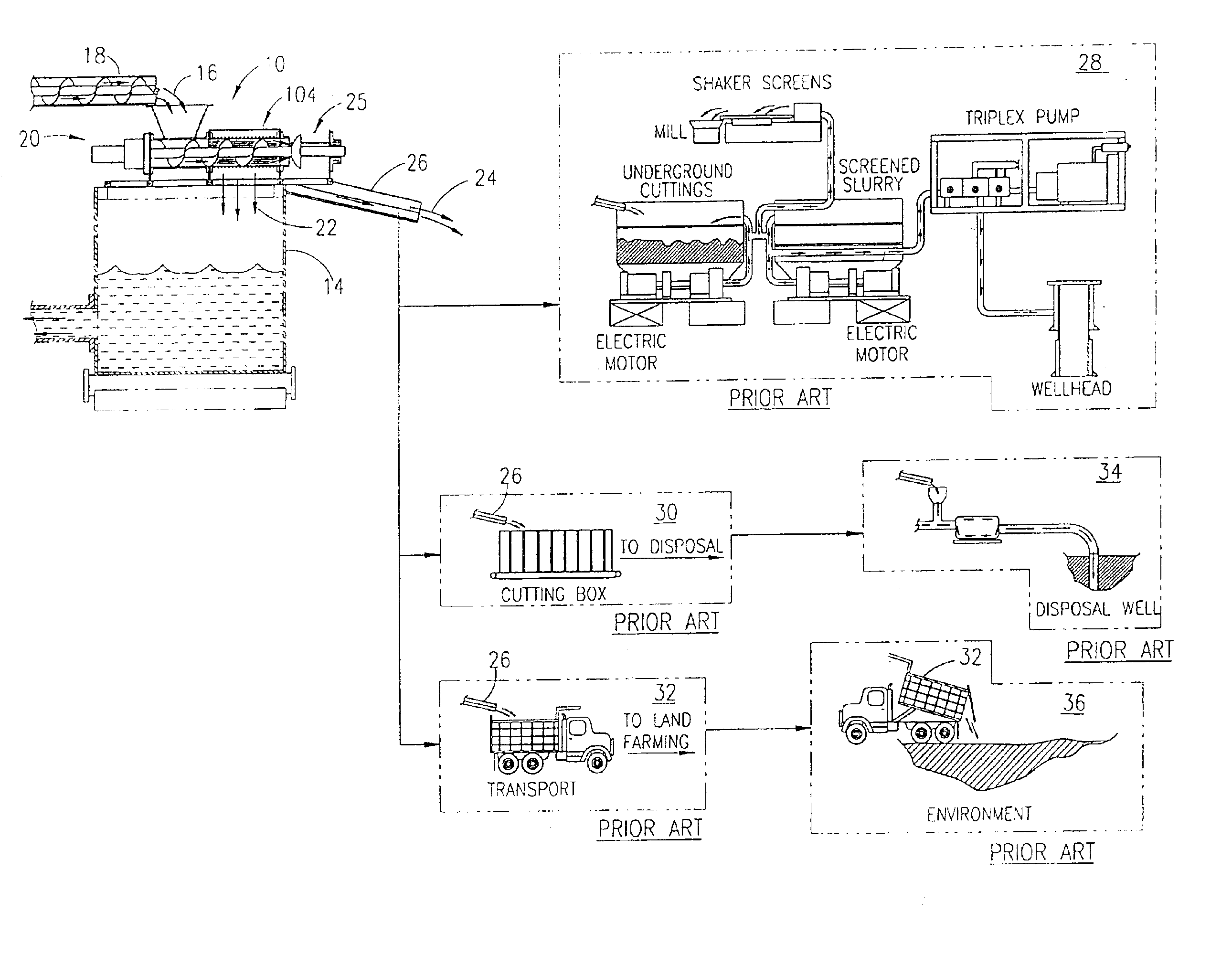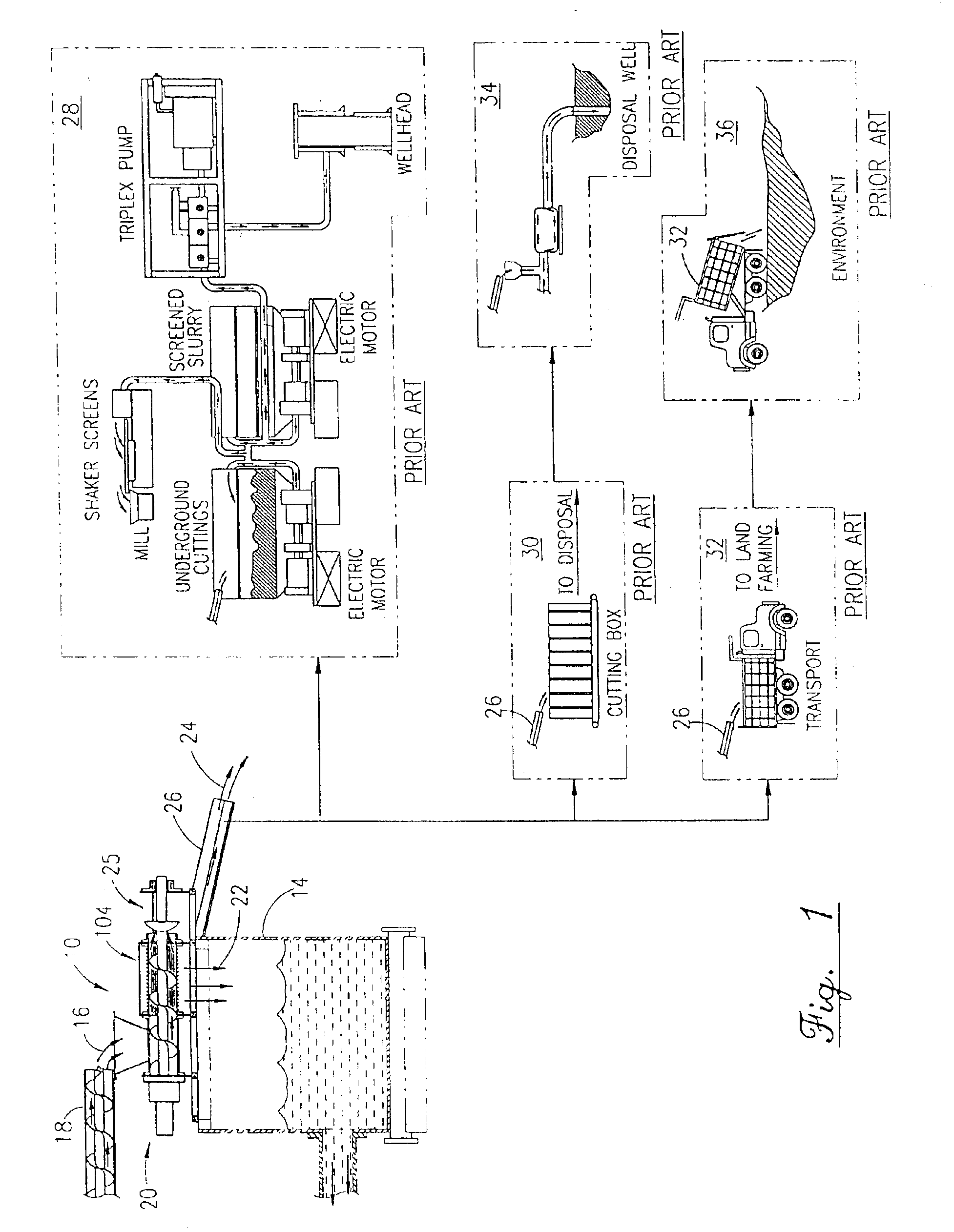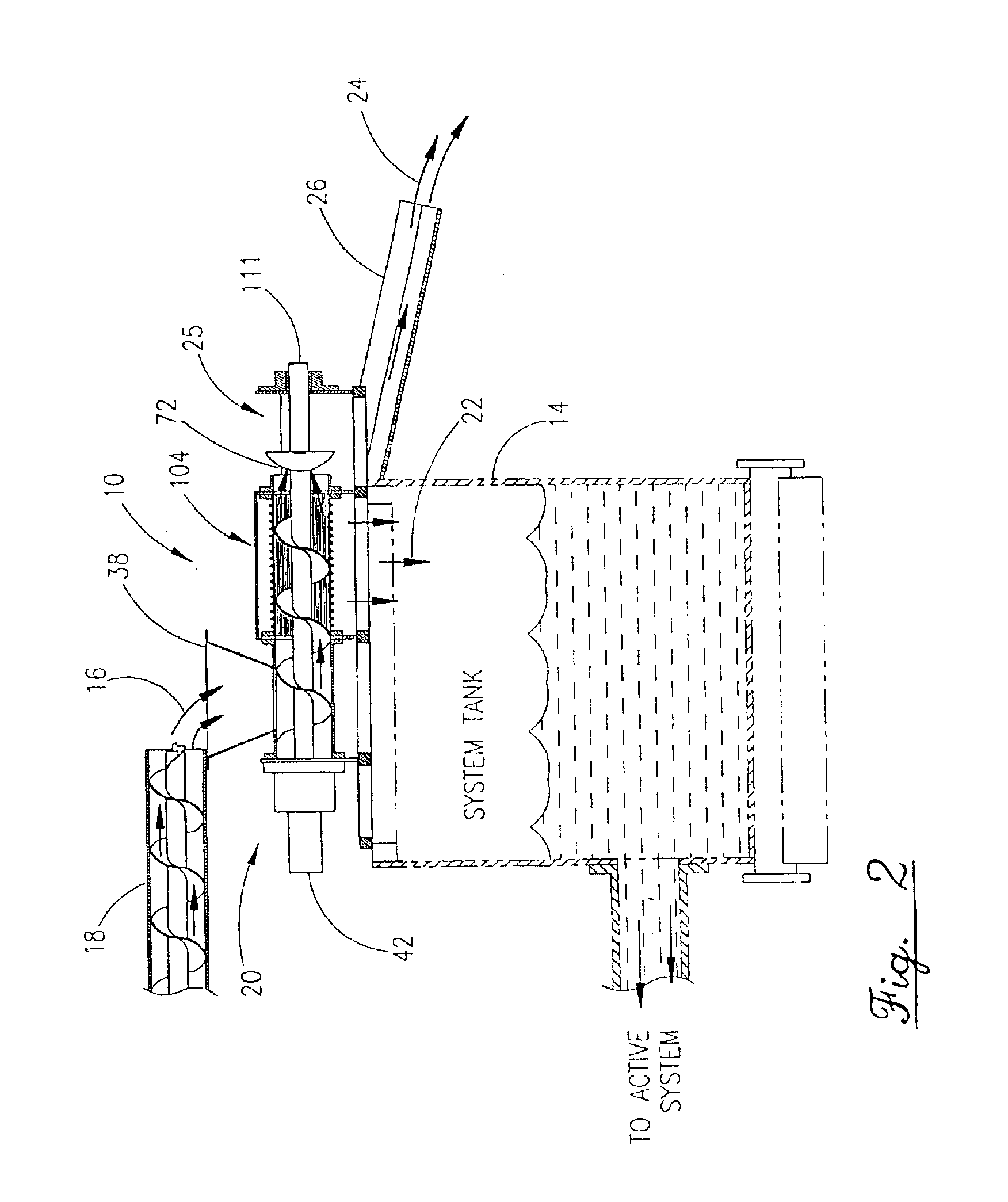Drilling fluid recovery and cuttings processing system
a processing system and drilling fluid technology, applied in strainers, kitchen equipment, borehole/well accessories, etc., can solve the problems of reducing the service life affecting the quality of the drilling fluid, so as to reduce the fluid content, reduce the discharge volume, and reduce the effect of moisture conten
- Summary
- Abstract
- Description
- Claims
- Application Information
AI Technical Summary
Benefits of technology
Problems solved by technology
Method used
Image
Examples
Embodiment Construction
[0036]Referring first to FIG. 1 where the major components of the defluidization recovery system 10 starts with drill cuttings and drilling fluids in a slurry 16 collected from any source as overflow or underflow, usually from the rig's shaker screens (not shown). The slurry 16 is transported via a conveyor 18 to the screw press 20, shown here in cross section and better seen in FIG. 2, mounted on top of a fluid recovery tank 14, illustrating the flow path of the slurry 16 being defluidized. It is conceived that a screw press 20 or other compaction type presses depicted herein, having particular characteristics, could be mounted on or near a drilling fluids system tank 14 in which case drilling fluids contained in the overflow and underflow slurry 16 could be separated from the drill cuttings processing system prior to discharge into the environment. The slurry 16, in most cases, contains valuable drilling additives including synthetics and / or surfactants that after having passed th...
PUM
 Login to View More
Login to View More Abstract
Description
Claims
Application Information
 Login to View More
Login to View More - R&D
- Intellectual Property
- Life Sciences
- Materials
- Tech Scout
- Unparalleled Data Quality
- Higher Quality Content
- 60% Fewer Hallucinations
Browse by: Latest US Patents, China's latest patents, Technical Efficacy Thesaurus, Application Domain, Technology Topic, Popular Technical Reports.
© 2025 PatSnap. All rights reserved.Legal|Privacy policy|Modern Slavery Act Transparency Statement|Sitemap|About US| Contact US: help@patsnap.com



